 Paper.
Paper.

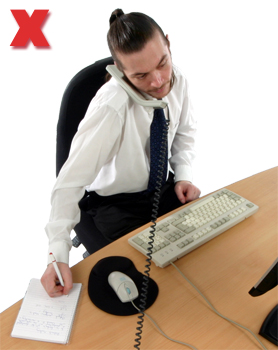

Above: Finding an appropriate place to use a document can reduce the risk of stretching around the workstation.
- Introductory remarks
- Top tips
- Position
- Document holders
- Alternative keyboards
- Colour (using pale yellow as an example)
Introduction.
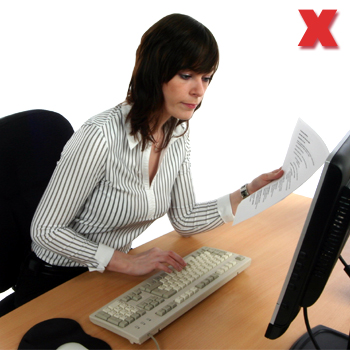
Above: Due to lack of space directly in front and around the keyboard area, users will often hold documents
in the air to read them.
Paper on a desk and information on a screen, or writing notes when using the computer can lead to the head, neck and twisted torso movements that compromise both health and posture. Ensuring employees are fully aware of the risks and can take steps to correct bad habits is the first step, but document holders are the answer for anyone referring to paperwork whilst operating the computer.
Top tips.
- Ensure the desk is large enough to allow both writing and computer use without compromising posture when both are required for the job.
- Consider document holders to help reduce neck movement when looking between paper and screen.
- Avoid placing paperwork in front of the keyboard. Consider a holder behind the keyboard.
Position.
Reading reference material whilst using the screen.
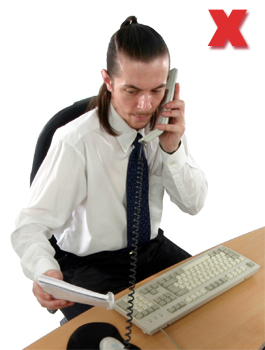
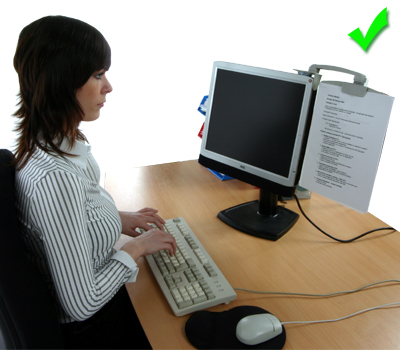
Above: A screen mounted document holder is preferable to holding the information in the air yourself.
- Minimise head movement and held twists in the neck by placing paperwork in line of view using an appropriate document holder.
- A touch typist will look between paper and screen. Their preference may be to have the paperwork directly in front of them with the screen slightly offset if they are only occasionally glancing at the screen.
- A non-touch typist will look down at the keyboard, across to the paperwork and up to the screen. The position of the paperwork would be improved by placing it, if possible, in the space between the keyboard and the monitor so that it is in line of view.
Writing notes on reference material whilst using the screen.
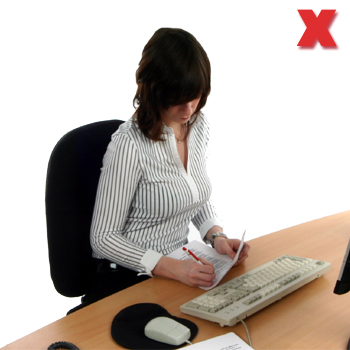
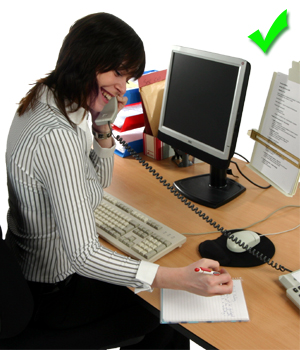
Above: Try not to use the small amount of space in front of the keyboard to write. Moving the mouse back
temporarily is fine.
- Avoid placing the paperwork to the front of the keyboard and then reaching over to enter keystrokes. This results in a static load on the arms as they are extended forwards.
- If it seems impractical to place the paperwork behind the keyboard while entering details and then to move it when writing notes consider a more flexible arrangement to reduce health risks, such as a compact keyboard or a separate numeric pad where number entry is required.
Writing when not using the screen.
- Ideally there should be a separate desk area to use, where posture isn’t compromised.
- Alternatively move the keyboard to free up space in front of the screen.
- Consider an alternative more compact or wireless keyboard that is easy to move aside.
- Consider a pull-out writing shelf that covers the keyboard.
Writing when using the screen.
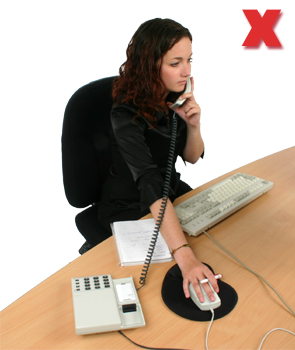
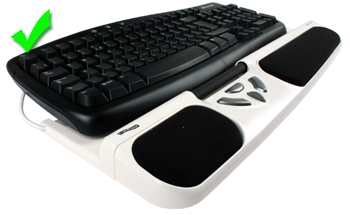
Above: Avoid reaching over the papers to use a mouse while stretching - a suitable alternative
could be the RollerMouse Station.
- The paper is likely to be placed in the space generally occupied by the mouse, the mouse pushed back and the arm then held in extension or at an angle away from the body to use the mouse.
- Consider moving the mouse to the other side of the keyboard for use with the other hand.
- Exchange the mouse for one that can be positioned to the front of the keyboard, (such as RollerMouse or Mouse Trapper).
Document holders.


Above: An angle bracket and screen mounted document holder. Weighted base document holders are also
available.
- Available in A4 and A3 sizes
- Check the depth of the lip: a deeper lip will take more paper
- Check stability / weighted base. Is it capable of holding a book or open file?
- Touch-typists need a height adjustable holder to position next to the screen
- Page position guides are a useful tool not always included
- Non touch-typists should select a holder with an adjustable angle. When placing the holder in the space between the keyboard and monitor it can be adjusted so it does not hide the lower part of the monitor
Alternative keyboards.
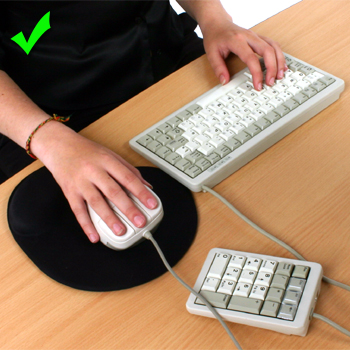
Above: Compact keyboard with external numeric pad, providing a more flexible working environment.
By using different sizes and styles of keyboard you can create more space on your desktop to use paper. This area is explored in more detail within the keyboard section.
Select this link to view a factsheet on keyboard and mouse alternatives.
Colour (using pale yellow as an example).
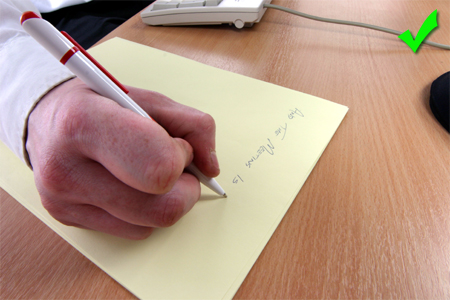
Above: Many people find using yellow paper helps with their reading and writing.
- Some users find the whiteness of paper tiring to work with.
- Consider providing pale coloured paper, particularly cream/pale yellow, to give good contrast but feel more comfortable.
- People with a visual impairment or dyslexia also find coloured paper helpful.